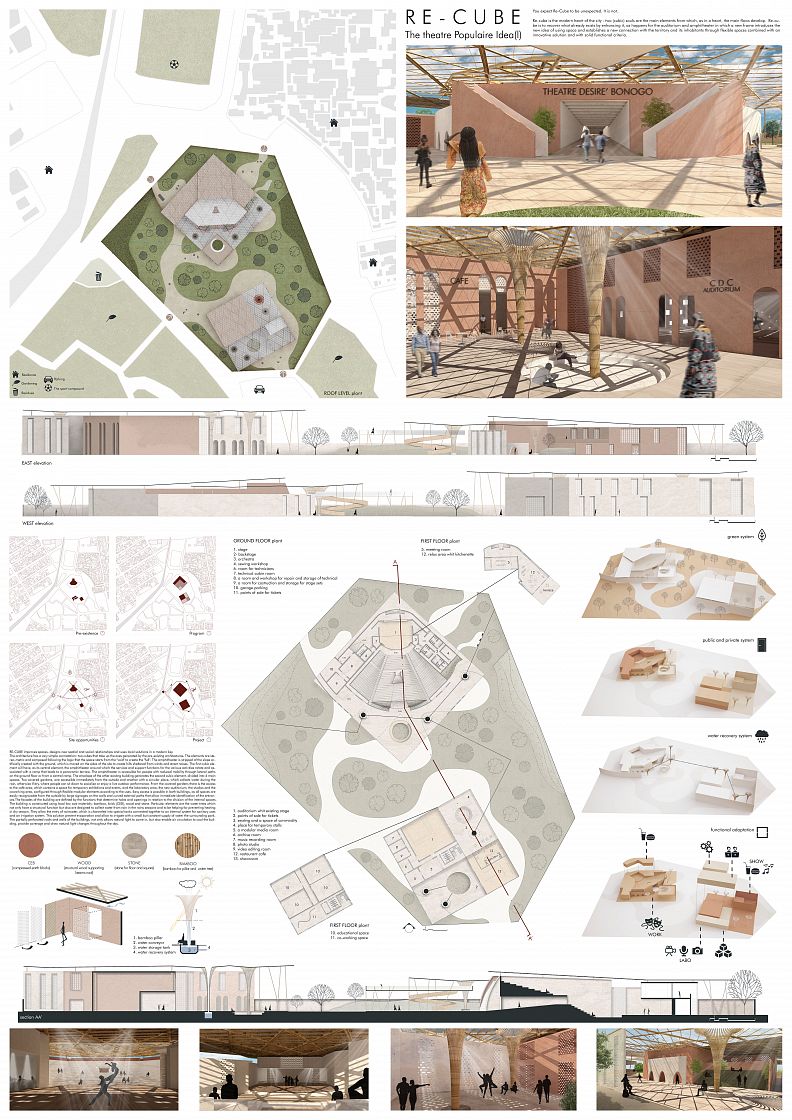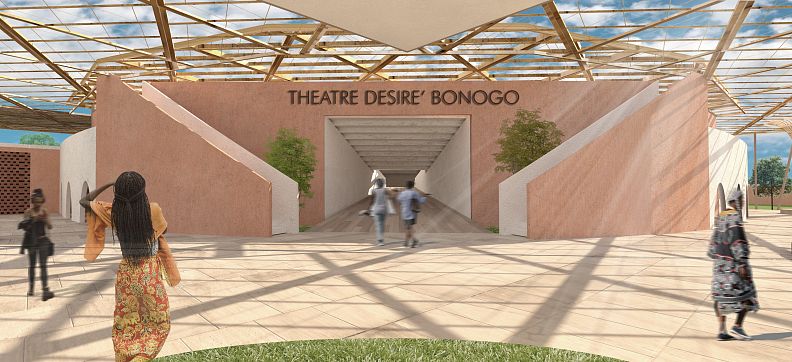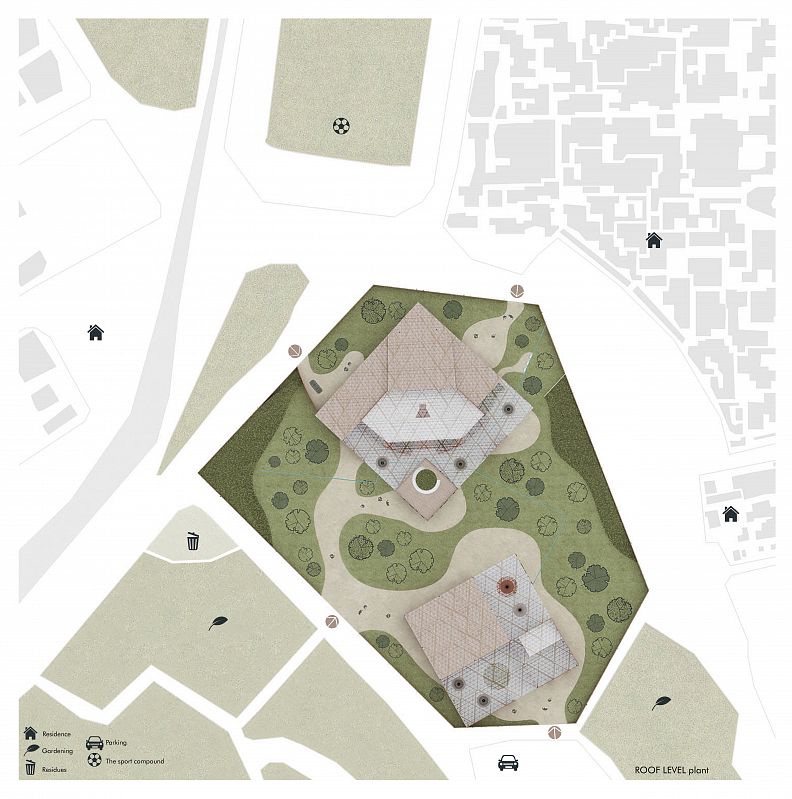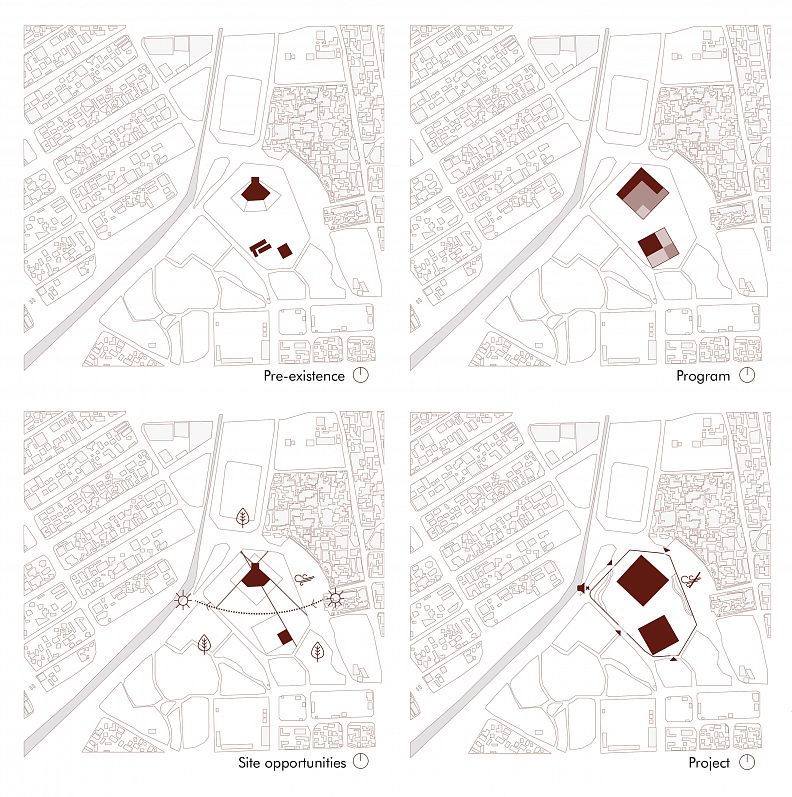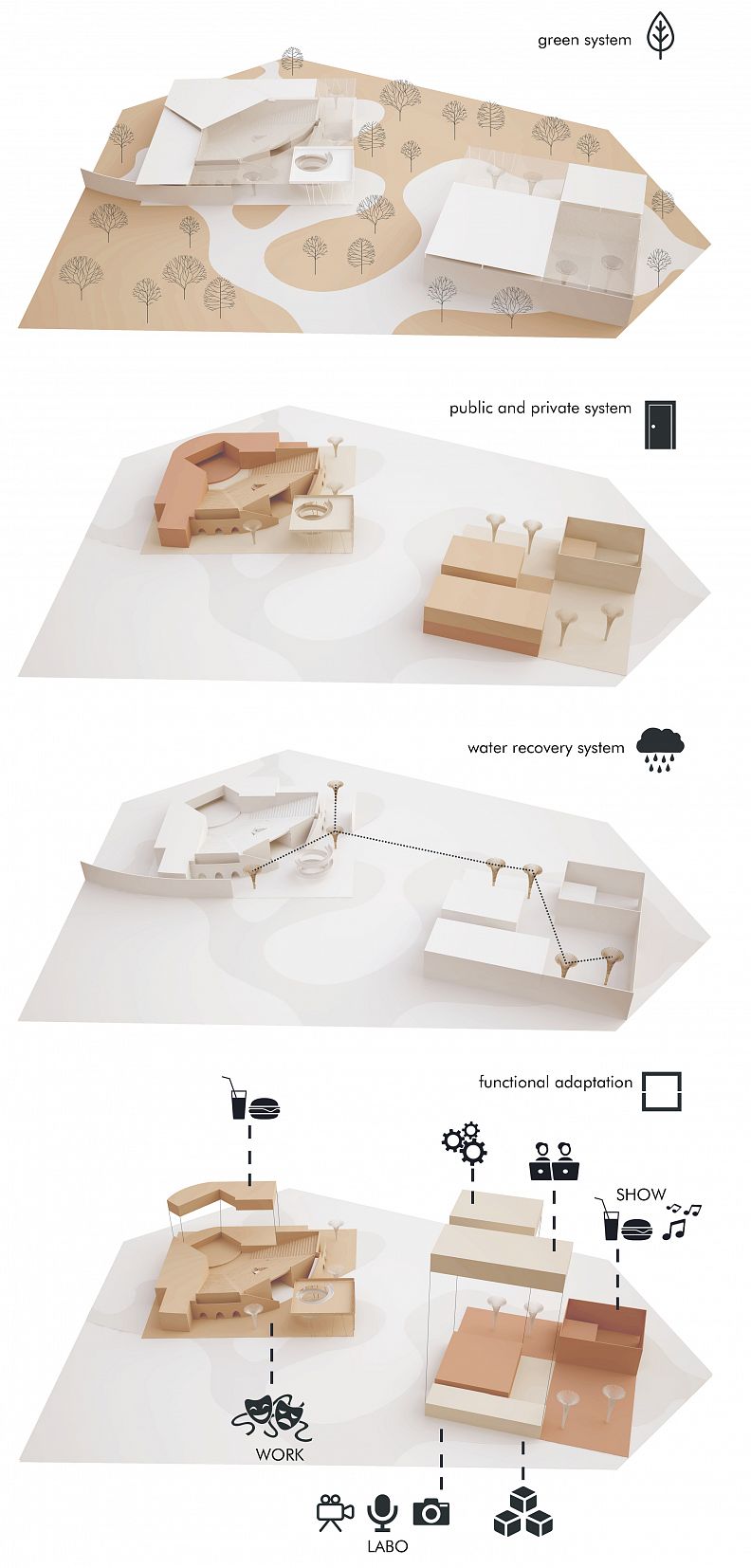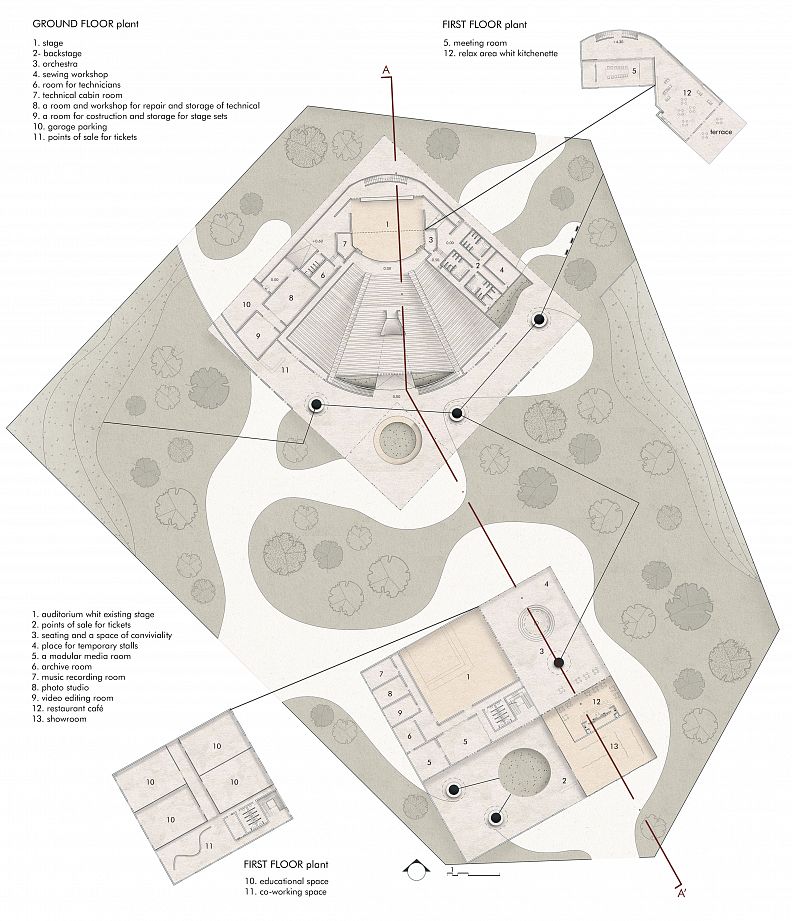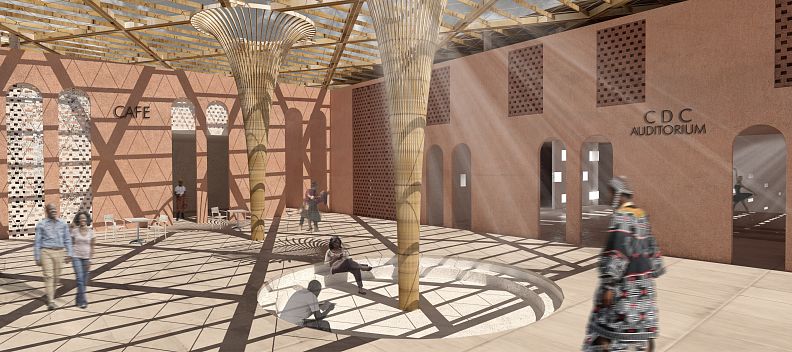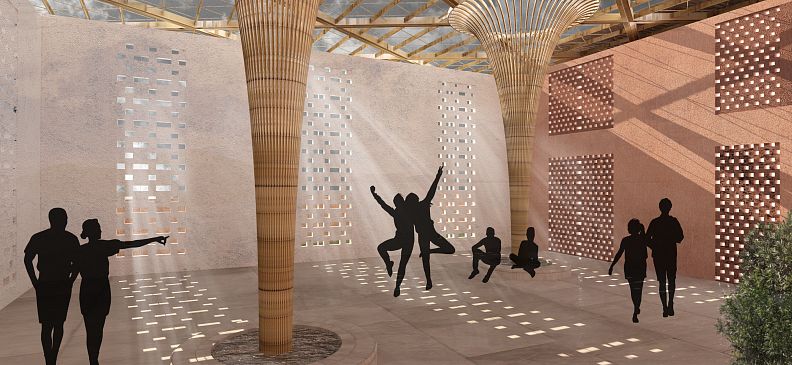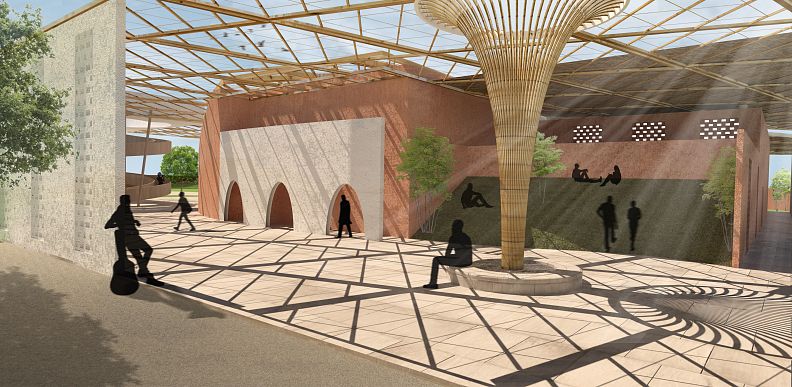RE-CUBE The Theatre Populaire Idea(l)

Project idea
You expect Re-Cube to be unexpected. It is not.
Re-cube is the modern heart of the city - two (cubic) souls are the main elements from which, as in a heart, the main flows develop. Re-cube is to recover what already exists by enhancing it, as happens for the auditorium and amphitheater in which a new frame introduces the new idea of using space and establishes a new connection with the territory and its inhabitants through flexible spaces combined with an innovative solution and with solid functional criteria.
Project description
RE-CUBE improves spaces, designs new spatial and social relationships and uses local solutions in a modern key.
The architecture has a very simple connotation: two cubes that take up the axes generated by the pre-existing architectures. The elements are stereo-metric and composed following the logic that the space starts from the "void" to create the "full". The amphitheater is stripped of the slope artificially created with the ground, which is moved on the sides of the site to create hills sheltered from winds and street noises. The first cubic element will have, as its central element, the amphitheater around which the services and support functions for the various activities rotate and associated with a ramp that leads to a panoramic terrace. The amphitheater is accessible for people with reduced mobility through lateral paths on the ground floor or from a central ramp
The envelope of the other existing building generates the second cubic element, divided into 4 main spaces. Two covered gardens, one accessible immediately from the outside and another with a circular place, which collects water during the rain, otherwise if dry, where people can sit down to socialize or enjoy a live outdoor performance. From the covered gardens there is the access to the café area, which contains a space for temporary exhibitions and events, and the laboratory area, the new auditorium, the studios and the coworking area, configured through flexible modular elements according to the uses.
Easy access is possible in both buildings, as all spaces are easily recognizable from the outside by large signages on the walls and curved external paths that allow immediate identification of the entrances.
The facades of the building are defined by the functions that determine holes and openings in relation to the division of the internal spaces.
Technical information
The building is constructed using local low cost materials: bamboo, brick (CEB), wood and stone.
Particular elements are the water trees which not only have a structural function but also are designed to collect water from rain in the rainy seasons and to be helping for preventing heating in dry season. They allow the entry of rainwater, which is channeled into special tanks connected together to an internal system for sanitary uses and an irrigation system. This solution prevent evaporation and allow to irrigate with a small but constant supply of water the surrounding park.
The partially perforated roofs and walls of the buildings, not only allows natural light to come in, but also enable air circulation to cool the building, provide coverage and draw natural light changes throughout the day.
